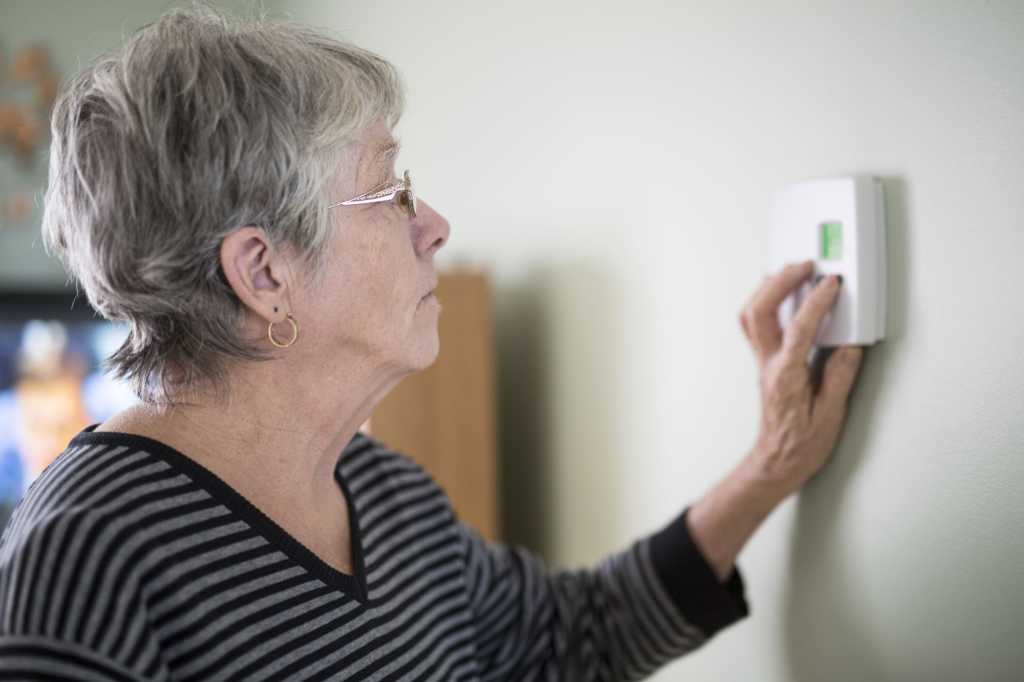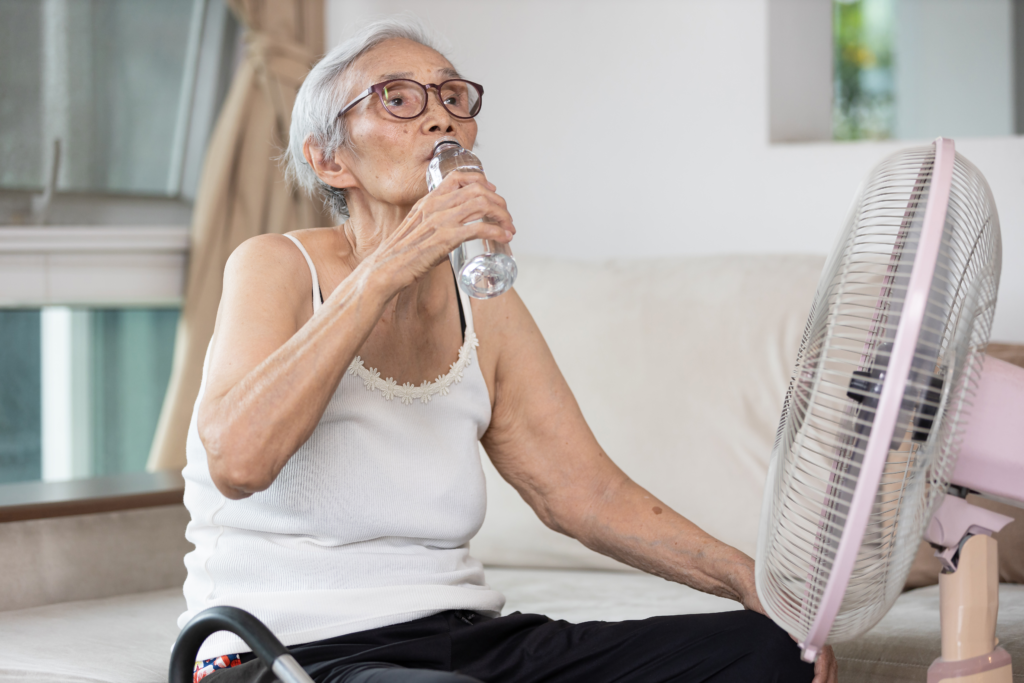In many homes, we can sometimes take for granted that the temperature is comfortable and consistent. For residents in aged care, this is not always the case.

Many factors can affect the indoor temperature in aged care homes, such as the number of people in a room, the type of clothing they are wearing and the time of day.
It is important to closely monitor the climate control in aged care homes to ensure the comfort and safety of residents.
There are a number of health risks associated with extreme temperatures, both hot and cold. These include dehydration, heat exhaustion, heat stroke, hypothermia and frostbite.
Elderly people are particularly susceptible to these risks, as their bodies are not as efficient at regulating their internal temperature.
This means that even a small change in temperature can have a significant impact on their health.
Let’s take a look at everything that goes into keeping an aged care home at a comfortable temperature.
Safety guidelines for elderly residents facilities
Facilities for elderly residents must provide a comfortable and safe environment at all times.
This means monitoring the temperature and humidity levels and making sure they are within the recommended range.
It is also important to have a backup plan in case of power outages or other emergencies that could affect the climate control system.
There are a number of ways to cool a room, such as air conditioning, fans and evaporative cooling. Heating can be provided by reverse-cycle air conditioners, space heaters and hydronic heating.
It is important to note that some of these methods – such as space heaters – can be a fire hazard if not used correctly.
The type of climate control system you use will depend on a number of factors, including the size of the room, the number of people in the room and the time of day.
For example, a small room with few people in it may only need a fan to cool it down, whereas a larger room with more people in it may need an air conditioner, or one of the range of options available.

Access to climate-controlled areas
All residents should have access to climate-controlled areas, such as air-conditioned rooms or covered outdoor areas. This is especially important for those who are more susceptible to the risks associated with extreme temperatures.
Residents should also be able to control the temperature in their own room.
This can be done by using a thermostat or by opening and closing windows, which can also reduce costs for both the home or facilities and for the environment.
Benefits of proper climate control
There are many benefits to maintaining a comfortable temperature in care homes.
This includes reducing the risk of health problems, improving the quality of sleep and increasing the overall comfort of residents.
It is also important to consider the environmental impact of climate control.
Heating and cooling systems use a lot of energy, which can contribute to climate change. Using energy-efficient systems and practices can help to reduce this impact.
Monitoring the climate control in aged care homes is essential to the comfort and safety of residents.
By following the guidelines and using the appropriate systems, we can ensure that homes are comfortable and safe for everyone.
Older Australians and climate change
Older Australians are one of the most vulnerable groups when it comes to climate change.
This is because they are more likely to suffer from health problems that can be exacerbated by extreme temperatures. They are also more likely to live in older homes that may not have adequate insulation or climate control systems.
There are a number of ways that older people can stay cool during a heatwave, such as staying indoors in air-conditioned rooms, wearing loose-fitting clothing and drinking plenty of fluids.
It is also important to keep an eye on elderly neighbours, friends and family members during a heatwave, as they may not be aware of the health dangers of extreme heat.
Older people and bushfires
In the event of a bushfire, it is important for older Australians to have a health plan in place to stay safe.
This may include staying with family or friends who live outside the fire zone, or going to an evacuation centre so they can avoid the effected environment, as well as get proper ventilation.
Preventative Measures for Aged Care Quality
The Australian Medical Association has long been advocating for better air conditioning in aged care.
Poor air quality is a leading cause of health issues for aged care residents.
The aged care royal commission has put aged care quality and safety under a microscope in recent years.
Air temperature: why it matters
The air temperature in an aged care setting is very important for the comfort and safety of residents.
During heat waves, the air temperature can become dangerously hot, putting residents at risk of health issues.
Access to air conditioning is a crucial preventative measure for aged care quality.
Health issues caused by poor air quality are a leading concern for the aged care sector. A safe and comfortable environment is essential for the wellbeing of residents.
Preventative maintenance in an aged care setting
Preventative maintenance is a crucial part of ensuring aged care quality.
Aged care facilities should have regular air conditioning maintenance to ensure comfortable internal temperatures and safe environments for residents.
This includes having an air conditioning system that is fit for purpose and meets the needs of residents.

Energy consumption and aged care
The aged care sector is one of the largest consumers of energy in Australia.
Aged care facilities are required to maintain comfortable internal temperatures for residents. This can be a challenge, particularly during heat waves.
However, there are a number of ways to improve energy efficiency in aged care. These include:
- Making sure the air conditioning system is fit for purpose
- Improving the insulation of the building
- Making sure the building is oriented to maximise the use of natural light and ventilation
When it comes to air conditioning, aged care facilities have a number of options available to them.
One option is to install air conditioning that is specifically designed for aged care. This type of air conditioning is more energy efficient and can help to reduce energy consumption, and comes with safety features that are designed for aged care settings.
Another option is to make use of existing air conditioning systems. This can be done by retrofitting air conditioning units with energy-efficient features.
This can help to reduce energy consumption and improve the comfort of residents.
Why climate control is so important in aged care facilities
When you consider the benefits of air conditioning, it is clear that it is a crucial part of aged care quality.
Air conditioning helps to improve the air quality in an aged care setting, and can also help to reduce energy consumption.
It is important to make sure that the air conditioning system is fit for purpose and that regular maintenance is carried out for the health and wellbeing of your residents, hospital staff, and visitors.









